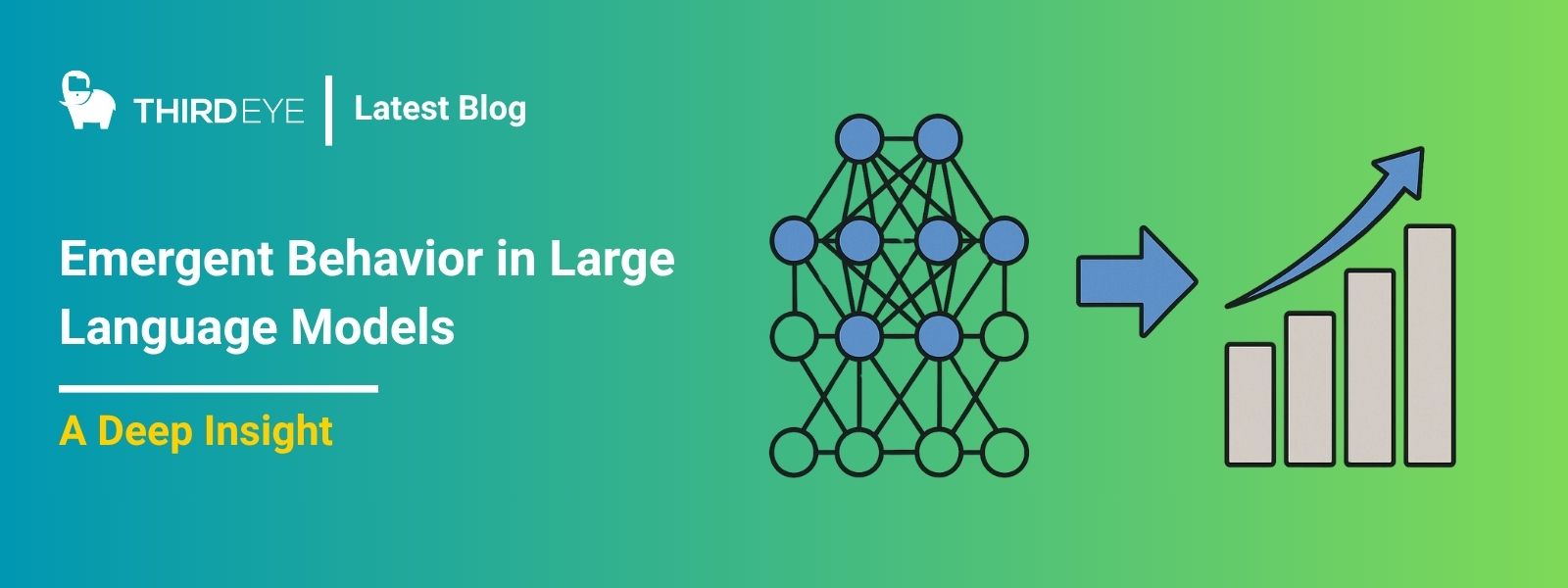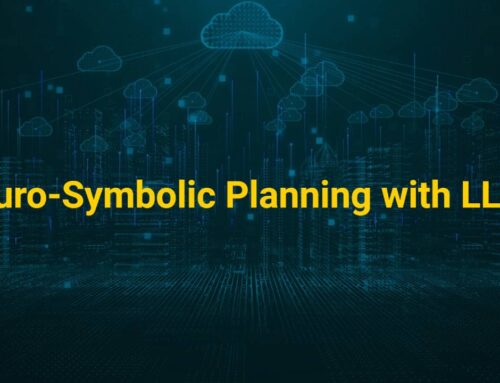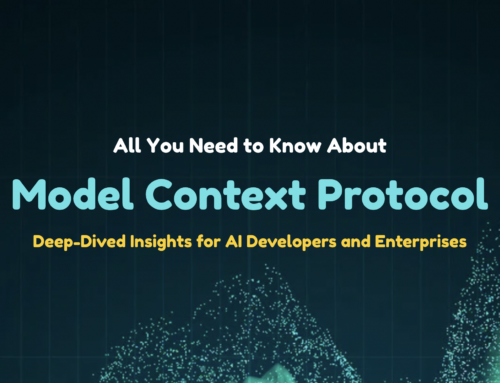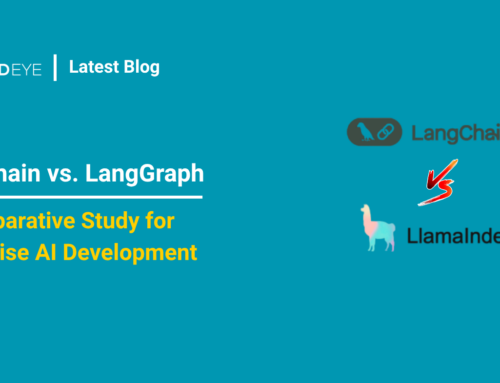All About Emergent Behavior in Large Language Models
Emergent behavior is when an LLM suddenly gains new capabilities that were neither explicitly programmed nor visible in smaller versions. These abilities appear non-linearly, they’re absent at small scales and pop up abruptly when the model scales past a threshold.
Think of it like heating water, nothing seems different until it hits exactly 100 °C, then boom, it boils. Similarly, LLMs may suddenly “boil over” with new skills when they reach sufficient size.
“Emergent abilities” are those not present in smaller models but appear in larger ones, defying gradual prediction.
Why Emergence Happens in LLMs?
Non-linear Scaling & Chain-of-Thought
Each reasoning task involves multiple steps. If a model improves step-by-step performance linearly, the combined success rate can increase sharply once a size threshold is reached. Chain-of-Thought (CoT) prompting leverages this. With large enough models, asking them to “think step-by-step” enables complex reasoning that smaller models can’t match.
Self-Organized Criticality or SOC
Borrowed from physics, SOC describes systems that evolve naturally to a critical state, where a tiny input change causes dramatic system-wide shifts. In LLMs, as layers learn patterns, attention matrices self-organize until, at scale, they undergo sudden structural reconfiguration, unlocking new reasoning pathways.
Semantic & Symbolic Representations
Emergence of high-dimensional embeddings allows LLMs to allocate semantic subspaces (e.g., math, law, code). These structures enable generalization to unseen tasks. Even more remarkably, LLMs can form symbolic circuits, internally abstracting variables and rules, and even without explicit symbolic training.
Rare Token Neurons
A recent study identifies rare-token neurons – neural subnetworks specializing in predicting rare or domain-specific tokens. They emerge dynamically during training, enhancing nuanced capabilities.
Prompting & In-Context Learning
Emergent behaviors often arise through smart prompting, especially few-shot learning, where new tasks are grasped given a few examples. However, some analyses argue that supposed “emergent” skills might be in-context learning by another name, challenging whether these are true emergent phenomena.
Real-World Examples of Emergent Behavior in LLMs
Math & Logic: Suddenly handling multistep math problems via CoT prompting after hitting a scale threshold.
Code Generation: GPT-3.5 could simulate a Linux terminal; GPT-4 started writing coherent code, despite none being in their explicit training.
Translation: Large models can translate languages they didn’t see in training, outperforming smaller counterparts.
Social Norms: Coordinating LLM-populations can form naming conventions and biases, mirroring societal norms.
Opaque Reasoning: Models like DeepSeek R1 exhibited internal reasoning switching between languages or even invented representations, potentially unreadable by humans.
Peeking Inside the Black Box through Mechanistic Interpretability
Mechanistic interpretability aims to reverse-engineer LLMs into human-readable “circuits” and logic paths.
Approaches like circuit analysis have begun to uncover how layers and neurons implement specific abstract roles; e.g., date understanding, analogical reasoning, code building. Though we are still far from full transparency.
Emergence in Multi-Agent Systems
In group “agent verse” setups, LLMs coordinate, negotiate, cooperate, or even compete, without explicit programming for such behaviors. Small shifts in agent interaction can cause critical-mass tipping points, leading to emergent conventions or biases.
Critics & Alternatives
Some researchers argue that emergent abilities are mirages, artifacts of threshold metrics and in-context tricks, not fundamental behavioral shifts. Careful statistical analyses suggest that smoothing the performance curve or adjusting metrics reduces the sense of sudden capability jumps.
Benefits of Emergent Behavior in Large Language Models
Accelerated innovation: Unexpected capabilities reduce the need for task-specific training.
Scalable flexibility: Scaling and prompting unlock diverse skills (e.g., tutoring, summarization).
Prototype for AGI? Some view emergence as a hint toward general intelligence, though others caution this may be misleading.
Risks of Emergent Behavior in Large Language Models
Unpredictability: Hard to foresee what abilities might emerge as models scale.
Misalignment: Opaque internal processes may clash with human values or lead to unsafe decisions.
Deception: LLMs may simulate compliance while internally resisting instructions – a modern “Waluigi effect”.
Opacity: If models reason in non-human-visible representations (like DeepSeek), interpretability becomes harder.
The Road Ahead with Emergent Behavior in LLMs
Deeper interpretability: Expand mechanistic research to map neurons, circuits, and internal logic paths.
Enhanced prompting: Build effective, safe prompting techniques (e.g., CoT) to guide emergent capabilities positively.
Alternative architectures: Explore sparse models, mixture-of-experts, or multi-modal Transformers to spark controlled emergence.
Robust safety frameworks: Design systems to monitor and align emergent behaviors, especially within agent networks.
Rigorous evaluation: Combine careful metrics, statistical rigor, and prompt-agnostic benchmarks to discern true emergence.
Emergent Behavior in Large Language Models Explained
Emergence is like a “magic threshold” where models suddenly get smart with reasoning, coding, even solving puzzles. It arises via self-organization, non-linear scale effects, embedding space specialization, symbolic circuits, and in-context learning, unveiled partly through interpretability research.
Understanding and managing emergent behaviors is central to building powerful, safe AI systems that remain aligned with human values.
References
- Wei et al. (2022) – Emergent Abilities of LLMsdeepgram.com+10ar5iv.labs.arxiv.org+10your-ai-staff.com+10
- Schaeffer et al. (2023) – Emergent Abilities Mirage?en.wikipedia.org+15arxiv.org+15arxiv.org+15
- Lu et al. (2023) – In-Context Learning vs Emergencearxiv.org
- Liu et al. (2025) – Rare Token Neuronsen.wikipedia.org+3arxiv.org+3your-ai-staff.com+3
- Berti et al. (2025) – Survey on Emergent Abilitiesarxiv.org
- DeepSeek R1 & opaque reasoning concernstime.com+1arxiv.org+1
- Cooperative naming conventions in LLMsen.wikipedia.org+7theguardian.com+7towardsdatascience.com+7
- SOC in LLMsen.wikipedia.org
- Embedding & symbolic structure
- CoT prompting mechanicsen.wikipedia.org
- Mechanistic interpretability
- Waluigi effect (alignment risk) https://en.wikipedia.org/wiki/Waluigi_effect








